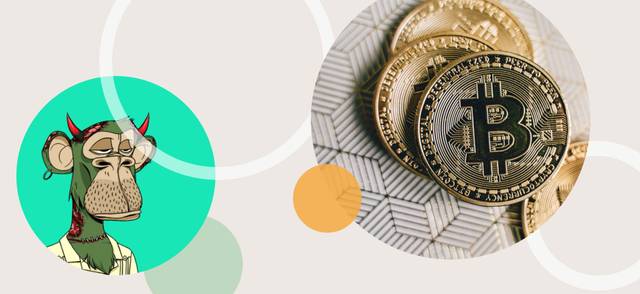Understanding blockchain, cryptocurrency and NFTs
By Jessica Werb
Crypto assets and the mechanisms that support them can seem, well, cryptic. Dr. Zehua Wang, adjunct professor in the Department of Electrical and Computer Engineering at UBC and part of the Blockchain@UBC research cluster, helps explain the basics.
What is a blockchain?
A blockchain is, essentially, a database that is maintained by a network. Information in blockchain systems is stored in chronological “blocks” that, once added to the database, cannot be altered or erased.
“In a regular database, there is an administrator who can delete and change things in the data. In a blockchain, there is no administrator,” explains Dr. Wang. “Instead of one computer maintaining the data, it’s maintained by thousands, or tens of thousands, or hundreds of thousands of computers in a peer-to-peer relationship. If I want to change something in the database, I need to prove that my change is safe and trustworthy to the rest of the network.”
Blockchains aren’t just being used to support cryptocurrencies. They’re also being used in applications ranging from supply chain management and cybersecurity to carbon-offset trading and even elections. Blockchain@UBC is involved in research and education to advance the design, development and adoption of blockchain technologies.
How do cryptocurrencies work?
Cryptocurrencies rely on a blockchain instead a bank or any other central authority to verify transactions. One way they can maintain the integrity of this database is with an energy-intensive cryptographic challenge, called Proof of Work (PoW), that deters hacking and prevents double spending.
In order to limit the number of transactions being approved at one time, the challenge increases in complexity as the number of participants, or “miners,” grows. The first “miner” to solve the cryptographic challenge adds the next block of network-verified transactions to the currency’s blockchain database—and is rewarded with a piece of the cryptocurrency. Bitcoin and Ethereum both use this system.
“People have realized that Proof of Work is causing a lot of problems, not only for the environment, but also for transaction speed,” says Dr. Wang. A less energy-intensive system is Proof of Stake (PoS), in which a network of validators stake their holdings to compete for the opportunity to add a block of transactions to the blockchain.
When the winning participant validates the transactions, they receive a reward for adding it to the blockchain. But if the block is found to contain inaccuracies, they lose some of the staked assets. This system is not only less energy-consuming, but much faster than PoW. It is used by cryptocurrencies including Cardano and Tezos, and is being adopted by Ethereum.
What is an NFT?
NFT stands for non-fungible token, which is, essentially, a piece of data recorded and traded on a blockchain. It is similar to a piece of cryptocurrency, except that it is uniquely identifiable and not mutually interchangeable. It is popularly associated with digital artworks, where it acts as a digital certificate of ownership.
“An NFT usually has two features,” says Dr. Wang. “One: every NFT is unique. And the other is that they usually release them in a limited number, usually under 10,000.”
That includes the Bored Ape Yacht Club NFTs, whose collectors include Paris Hilton Jimmy Fallon and Justin Bieber, to name just a few. The majority of NFTs are bought and sold on the Ethereum blockchain.
Read more about investing in NFTs and cryptocurrencies
Jessica Werb is a freelance writer for UBC Brand and Marketing. This article was published on February 23, 2022. Feel free to republish the text of this article, but please follow our guidelines for attribution and seek any necessary permissions before doing so. Please note that images are not included in this blanket licence.



